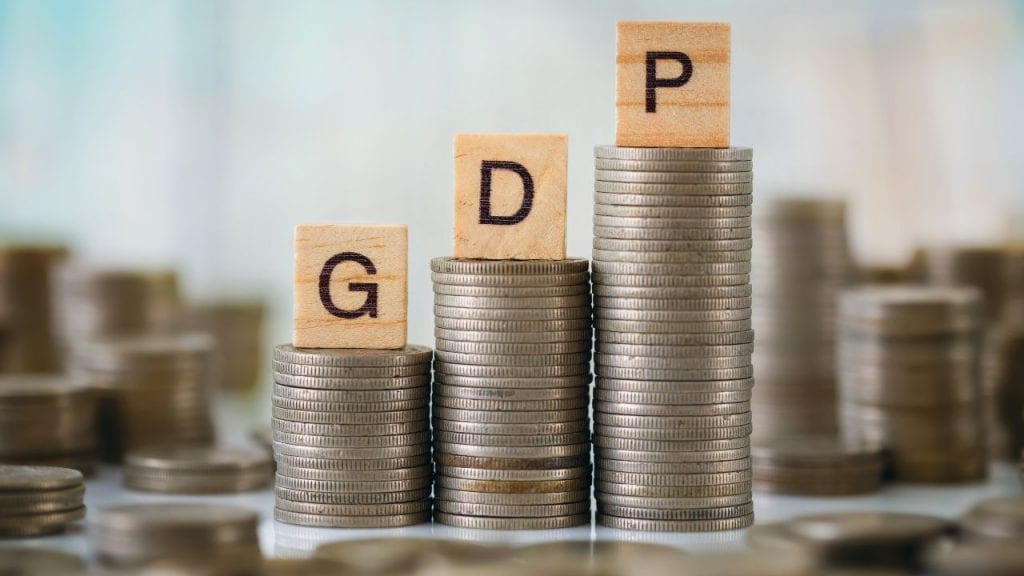By Dr. Gyan Pathak
The projection by National Statistics Office (NSO) of a sharp fall in India’s real GDP growth rate to a 4-year low to only 6.4 per cent in the current financial year 2024-25 compared to the growth rate of 8.2 per cent in 2023-24 is a wakeup call to the Government.. As for Net Domestic Product (NDP), it fell from 8.3 per cent to 6.4 per cent. It is like a thunderbolt for the Indian economy, though the data is still subject to change, since first advance data are typically subject to revision as coverage improves. The projection has arrested the ease of budget preparation, since it would form the base for the Union Budget 2025-26. The chief challenge for Union Minister of Finance Nirmala Sitharaman would now be reversing the trend, to maintain the growth momentum for recovery in the deteriorating job market and to improve consumption.
Real GDP is the GDP at Constant Prices, the base year being 2011-2012. The Union Budget 2024-25 has estimated it between 6.5-7 per cent. The performance of GDP growth rate was thus below the early estimate of the government. It is even below the level of the RBI’s estimate that was recently announced to be 6.6 per cent. Real GDP is estimated to attain a level of Rs 184.88 lakh crore in the financial year 2024-25, against the Provisional Estimate of GDP for the year 2023-24 of Rs 173.82 lakh crore. The situation is bound to impact the Union Budget 2025-26.
The nominal GDP growth rate, that is the GDP at the current prices, has been estimated by the NSO at 9.7 per cent for 2024-25. It is slightly above the nominal growth rate of 9.6 per cent in 2023-24. Nominal GDP is estimated to attain a level of Rs 324.11 lakh crore in the year 2024-25, against Rs295.36 lakh crore in 2023-24.
It is worth recalling that the GDP for Union Budget 2024-25 was estimated at Rs 326.36 lakh crore which was 10.5 per cent over the Provisional Estimates (PE) of 2023-24 at Rs 296.35 lakh crore. The estimated shortfall thus may create problems in reversing the current trend of sharp fall chiefly due to lack of fund.
Real GVA is estimated at Rs 168.91 lakh crore in the year 2024-25, against the PE for the year 2023-24 of Rs 158.74 lakh crore, registering a growth rate of 6.4% as compared to 7.2% growth rate in 2023-24. However, the Nominal GVA is estimated to attain a level of Rs 292.64 lakh crore during FY 2024-25, against Rs267.62 lakh crore in 2023-24, showing a growth rate of 9.3%.
The sectoral composition of the National GVA in 2024-25 reveals the real challenge lying ahead for the country. Share of Agriculture, Livestock, Forestry and Fishing is 18 per cent; Mining and Quarrying is 2 per cent; Manufacturing is 14 per cent; Electricity, Gas, Water Supply and Other Utility Services is 2 per cent; Construction 9 per cent; Trade, Hotels, Transport, Communication and Services related to Broadcasting 17 per cent; Financial, Real Estate and Professional Services 23 per cent; and Public Administration, Defence and Other Services 15 per cent.
Sector-wise comparison of National GVA from the year 2023-24 shows that barring only two sectors – Agriculture &c. and Public Administration &c. – all the other sectors has declined. Agriculture &c growth rate increased from 1.4 per cent to 3.8 per cent, while Public Administration &c growth rate increased from 7.8 per cent to 9.1 per cent.
Sharpest fall was registered in the Real GVA growth rate of Mining &Quarrying from 7.1 per cent in 2023-24 to 2.9 per cent in 2024-25. Real GVA growth rate in manufacturing fell from 9.9 per cent to 5.3 per cent; Electricity, Gas, Water Supply & Other Utility Services from 7.5 per cent to 6.8 per cent; Construction from 9.9 per cent to 8.6 per cent; Trade, Hotels, Transport, Communication and Services related to Broadcasting from 6.4 per cent to 5.8 per cent; and Financial, Real Estate and Professional Services from 8.4 to 7.3 per cent.
No wonder, with such a sharp fall in the real GVA growth in majority of sectors brought down the GDP growth rate, which in turn worsened the job market and real consumption levels among the working class due to falling real wages and high inflations.
How difficult will be managing funds can be imagined from the Net Taxes on Products data. In 2022-23, it was Rs 12.66 lakh crore, which increased by 19.1 per cent in 2023-24 to Rs 15.07 lakh crore. However, the growth rate declined to 5.9 per cent in 2024-25 in comparison to 2023-24. It would pose significant challenges since the first advance estimate puts this figure at Rs 15.97 lakh crore only.
Private final consumption expenditure share as percentage of GDP has declined from 58 per cent in 2022-23 to 56.3 per cent in 2024-25 advance estimate. Government final consumption expenditure share has also declined from 10 per cent to 9.3 per cent during this period. Exports declined from 23.9 per cent to 22.6 per cent.
Growth in the Gross National Income growth rate declined from 8.2 per cent in 2023-24 to 6.3 per cent in 2024-25 first advance estimate. Net National Income growth rate also declined from 8.3 per cent to 6.2 per cent during this period.
As for the main growth indicators, growth rates in — production of coal declined from 12.8 per cent to 6.4 per cent, production of cement from 10.2 per cent to 3.1 per cent, consumption of steel from 15.2 per cent to 12.3 per cent, aggregate bank deposits from 12.5 per cent to 11.9 per cent, and aggregate bank credits from 15.8 per cent to 13.1 per cent. WPI of food articles has also risen from 6.1 per cent in 2023-24 to 8.6 per cent in 2024-25.
Obviously, Union Budget 2025-26 has a very tough balancing act in hand to reverse the downside risk of the Indian economy and also to maintain its earlier growth momentum. (IPA Service)

 2025 AI Boom May Not Exactly Be Celebration Time For Indians
2025 AI Boom May Not Exactly Be Celebration Time For Indians 